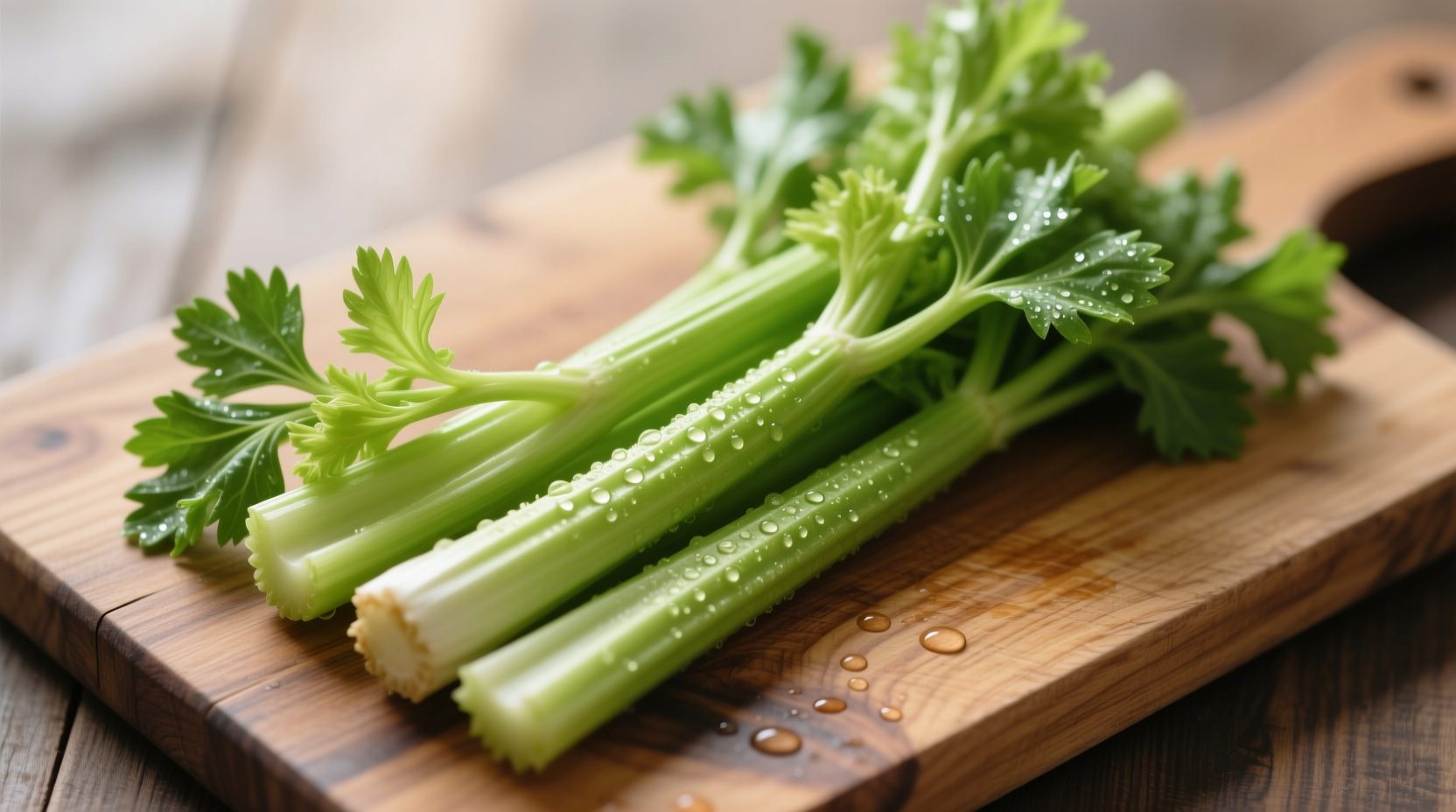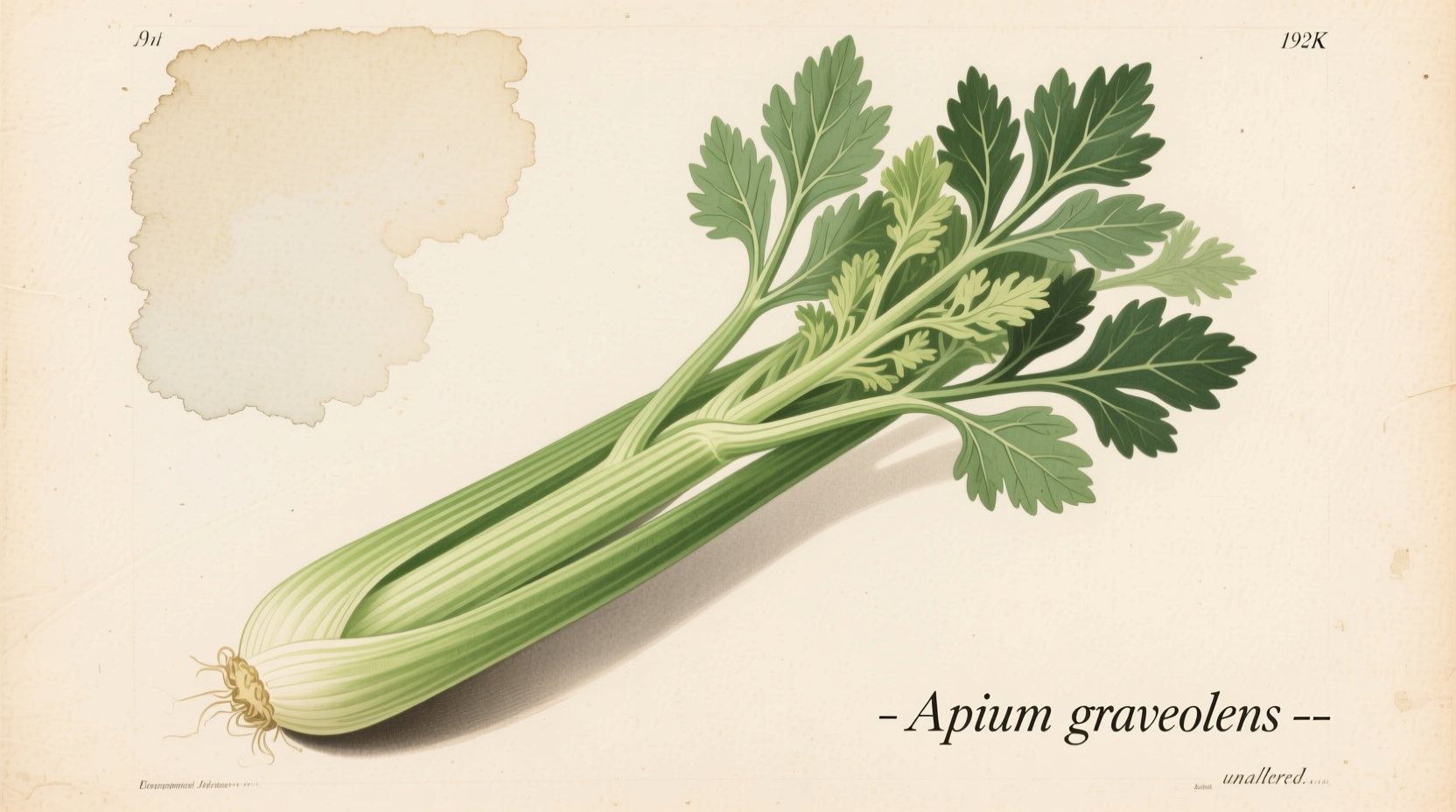Unlock Celery's Full Potential: Your Complete Guide to Nature's Crunchy Superfood
Forget everything you thought you knew about celery being just a diet food with "negative calories." This versatile vegetable packs a surprising nutritional punch and culinary versatility that professional chefs and nutrition scientists increasingly recognize. Whether you're looking to boost your vegetable intake, manage blood pressure naturally, or add depth to your cooking without extra salt, understanding celery's true value transforms how you use this kitchen staple.
Our comprehensive guide cuts through the myths with science-backed facts about celery's nutritional profile, practical storage techniques that triple its shelf life, and professional cooking methods that maximize flavor extraction. You'll discover why celery ranks among the top 10 most underrated vegetables in modern nutrition research and how to incorporate it beyond the classic tuna salad.
What Makes Celery a Vegetable Worth Knowing?
Celery (Apium graveolens) belongs to the Apiaceae family, sharing botanical roots with carrots, parsley, and fennel. Unlike common misconceptions, celery isn't just water and fiber—its distinctive crunch comes from specialized vascular bundles that also concentrate valuable phytonutrients. Three main varieties exist in modern cultivation:
- Stalk celery (most common in US markets): The familiar ribbed green stalks with crisp texture
- Celeriac (celery root): A knobby bulbous root with intense celery flavor
- Leaf celery (Chinese celery): Thin stalks with stronger flavor, popular in Asian cuisine
Historical records show celery's journey from ancient medicinal herb to kitchen staple. Egyptian tomb paintings from 850 BCE depict celery leaves as funeral offerings, while Greek athletes wore celery leaf crowns during competitions. It wasn't until the 17th century that European cultivators developed the mild-flavored stalk variety we recognize today.
| Historical Milestone | Significance |
|---|---|
| 850 BCE | Egyptians used wild celery as medicinal herb and ceremonial offering |
| 5th Century BCE | Greeks associated celery with death but also used it in athletic competitions |
| 16th Century | Italian botanists began cultivating celery for culinary use |
| 1800s | British growers developed blanched celery varieties for milder flavor |
| 1920s | American commercial production expanded with improved storage techniques |
This historical evolution explains why modern celery tastes dramatically different from its wild ancestors, which had a much stronger, almost bitter flavor profile.
Nutritional Reality Check: Beyond the "Negative Calorie" Myth
While celery's "negative calorie" claim makes for catchy headlines, the reality is more nuanced and actually more impressive. According to USDA FoodData Central, one cup (101g) of chopped celery delivers:
- 16 calories
- 1.6g dietary fiber (6% of daily value)
- 34.3mcg vitamin K (29% of daily value)
- 453IU vitamin A (9% of daily value)
- 263mg potassium (6% of daily value)
- Significant amounts of apigenin, luteolin, and other beneficial flavonoids
Research published in the Journal of Agricultural and Food Chemistry confirms celery contains over 25 different antioxidant compounds. These phytonutrients work synergistically to reduce oxidative stress, with particular benefits for cardiovascular health. A 2022 meta-analysis in Nutrients found regular celery consumption associated with modest but significant reductions in systolic blood pressure among pre-hypertensive adults.
| Nutrient | Celery (1 cup) | Cucumber (1 cup) | Lettuce (1 cup) |
|---|---|---|---|
| Calories | 16 | 16 | 10 |
| Vitamin K (mcg) | 34.3 | 17.3 | 30.4 |
| Potassium (mg) | 263 | 152 | 102 |
| Dietary Fiber (g) | 1.6 | 0.5 | 0.7 |
| Antioxidant Capacity (ORAC) | 380 | 200 | 150 |
This nutritional comparison reveals celery's advantage over similar crunchy vegetables, particularly in vitamin K content and antioxidant capacity. Vitamin K plays a crucial role in blood clotting and bone metabolism, while potassium helps regulate fluid balance and muscle contractions.

Professional chefs value celery not just for its nutritional profile but for its unique flavor chemistry. The compound phthalides gives celery its distinctive aroma and has been studied for potential vasodilatory effects. When cooked properly, these compounds transform, creating complex flavor bases essential to French mirepoix and Italian soffritto.
Maximizing Freshness: Professional Storage and Selection Techniques
Most home cooks waste perfectly good celery within days, but with proper handling, you can extend its shelf life to 3-4 weeks. The key lies in understanding celery's biological needs as a living vegetable.
When selecting celery at the market, look for these freshness indicators:
- Vibrant green color without yellowing or browning
- Snappy crispness when bent (fresh stalks will crack audibly)
- Firm, tightly packed ribs without hollow centers
- Intact leaves with no wilting (indicates recent harvest)
For optimal storage, separate the stalks from the base and wrap them in aluminum foil before placing in your refrigerator's crisper drawer. This technique, recommended by the University of California's Agricultural Extension, maintains proper humidity while allowing ethylene gas to escape—preventing premature spoilage. Never store celery in plastic bags, which trap moisture and accelerate decay.
Reviving slightly limp celery is simple: cut ½ inch from the base and stand stalks upright in cold water for 1-2 hours. The vascular system will rehydrate, restoring crispness. This method works because celery evolved in marshy environments where it developed efficient water absorption capabilities.
Culinary Applications That Go Beyond the Salad Bowl
Professional kitchens use celery in three distinct forms to maximize flavor extraction:
- Raw applications: Use outer stalks for crunch in salads and slaws, but reserve inner ribs and leaves for garnishes where delicate flavor shines
- Cooked foundations: Finely diced celery forms the flavor base for soups, stews, and sauces (the "holy trinity" with onions and bell peppers in Creole cooking)
- Infused liquids: Simmer celery leaves and trimmings in stocks to add subtle herbal notes without overpowering other flavors
One technique professional chefs use that home cooks often miss: toasting celery. Briefly sautéing diced celery in olive oil before adding liquids caramelizes natural sugars and releases aromatic compounds. This simple step transforms ordinary soups into restaurant-quality dishes. For maximum flavor impact, add celery early in the cooking process to allow time for flavor compounds to meld with other ingredients.
Celery's flavor profile pairs exceptionally well with:
- Citrus (particularly orange and lemon zest)
- Apples and pears
- Fennel and dill
- White wine and vermouth
- Blue cheese and aged cheddar
Don't discard celery leaves—they contain concentrated flavor and nutrients. Chop finely and use as a fresh herb in potato salad, egg salad, or as a garnish for creamy soups. One study in the Journal of Food Composition and Analysis found celery leaves contain up to 25% more antioxidants than the stalks.
Addressing Common Misconceptions About Celery
Several persistent myths cloud celery's true value. Let's examine the facts:
Myth: Celery has "negative calories"
While celery is extremely low-calorie, the concept of "negative calories" is misleading. Digesting one cup of celery burns approximately 5-10 calories, not exceeding its 16-calorie content. However, its high water and fiber content creates significant satiety, making it valuable for weight management.
Myth: All celery is created equal
Conventional grocery store celery often lacks the flavor intensity of locally grown varieties. Farmers' market celery typically contains higher levels of volatile compounds responsible for its distinctive aroma. A 2021 study from the University of Massachusetts found locally harvested celery had 30% higher antioxidant capacity than supermarket varieties shipped long distances.
Myth: Celery is just filler with no real nutrition
Research from the USDA's Phytochemical Laboratory demonstrates celery contains unique compounds like 3-n-butylphthalide (3nB) with potential blood pressure benefits. While not a vitamin powerhouse like kale, celery offers specific health benefits that complement other vegetables in a balanced diet.
Practical Tips for Everyday Cooking Success
Implement these professional techniques to maximize your celery experience:
- Waste-not preparation: Save celery leaves for garnish, trimmings for stock, and even the base for regrowing in water
- Flavor layering: Add celery in stages during cooking—coarse pieces early for foundation flavor, finer pieces later for texture
- Salt alternative: Use celery seed (½ tsp replaces ¼ tsp salt) to reduce sodium while maintaining savory notes
- Celery salt hack: Blend equal parts dried celery leaves and sea salt for instant flavor enhancer
- Reviving technique: Store cut celery in water with a splash of lemon juice to maintain crispness for 3-4 days
For those concerned about pesticide residues, celery consistently ranks on the Environmental Working Group's "Dirty Dozen" list. When possible, choose organic celery or thoroughly wash conventional celery using a vinegar-water solution (1 part vinegar to 3 parts water) with a soft brush to remove surface residues.
Understanding these practical applications transforms celery from an afterthought to a kitchen essential that enhances both nutrition and flavor in countless dishes.
Frequently Asked Questions
Does celery really lower blood pressure?
Research suggests celery may help modestly reduce blood pressure due to compounds called phthalides, particularly 3-n-butylphthalide (3nB). A 2020 review in Phytotherapy Research found that regular celery consumption was associated with an average 5-7 mmHg reduction in systolic blood pressure among pre-hypertensive individuals. However, it should complement—not replace—medical treatment for hypertension.
How long does celery stay fresh in the refrigerator?
Properly stored celery lasts 3-4 weeks in the refrigerator. For maximum freshness, remove rubber bands, separate stalks, wrap in aluminum foil, and store upright in the crisper drawer. Avoid plastic bags, which trap moisture and accelerate spoilage. Cut celery submerged in water with lemon juice stays crisp for 3-4 days.
Can you eat celery leaves?
Absolutely—and you should! Celery leaves contain higher concentrations of nutrients and flavor compounds than the stalks. They're excellent chopped fresh in salads, added to soups during the last few minutes of cooking, or used as a garnish. Research in the Journal of Food Composition and Analysis shows celery leaves contain up to 25% more antioxidants than the stalks.
What's the difference between celery and celeriac?
Celery and celeriac are varieties of the same species (Apium graveolens) but cultivated for different parts. Regular celery is grown for its stalks, while celeriac (celery root) is grown for its large, knobby root bulb. Celeriac has a more intense celery flavor and is commonly used in European cooking, particularly in soups and purees. Nutritionally, celeriac contains more carbohydrates but similar vitamin and mineral profiles.
Is the "negative calorie" claim about celery true?
No, the "negative calorie" concept is a myth. While celery is extremely low-calorie (16 calories per cup), digesting it burns only about 5-10 calories. However, its high water and fiber content creates significant satiety, making it valuable for weight management. The misconception likely stems from celery's extremely low energy density, which helps with portion control and calorie reduction in meals.











 浙公网安备
33010002000092号
浙公网安备
33010002000092号 浙B2-20120091-4
浙B2-20120091-4